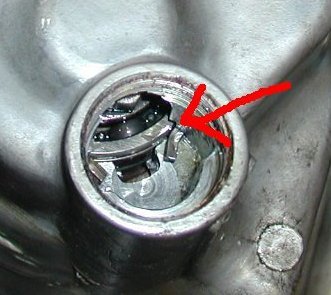Nope.. eyes are not fooling you.. only 6.. I thought that was odd too compared to the 9 that the nsx started with. Although I do have to admit... the nsx is the first car i've ever seen to have more than 6...
Pressure plate is stiff yes.. but not as people cry out to say and stuff. Although I'm a bad person to compare it to b/c my last hybrid had a pure drag clutch (still sprung hub though) in it and I drove it around the street daily... now THAT was stiff.. But stiffness over stock... yeah. i can see where some people would frown on this clutch.
This clutch is interesting in the fact that it's rather binary.. when I mean that I mean that it's either on or off... on the street I'm fine with it.. it's going up hills (particularly driveways) that kicks your tail. On a lighter note.. b/c of it's grab properties, it has forced me to learn how to heel-toe very quickly... :biggrin:
For my own personal reference I installed this clutch at 78475 miles... this way I can always go back to this post to see how long the clutch lasted.. :tongue:
thanks to those who helped again and good luck to those who wish to move forward w/ this DIY.
cheers,
x
Pressure plate is stiff yes.. but not as people cry out to say and stuff. Although I'm a bad person to compare it to b/c my last hybrid had a pure drag clutch (still sprung hub though) in it and I drove it around the street daily... now THAT was stiff.. But stiffness over stock... yeah. i can see where some people would frown on this clutch.
This clutch is interesting in the fact that it's rather binary.. when I mean that I mean that it's either on or off... on the street I'm fine with it.. it's going up hills (particularly driveways) that kicks your tail. On a lighter note.. b/c of it's grab properties, it has forced me to learn how to heel-toe very quickly... :biggrin:
For my own personal reference I installed this clutch at 78475 miles... this way I can always go back to this post to see how long the clutch lasted.. :tongue:
thanks to those who helped again and good luck to those who wish to move forward w/ this DIY.
cheers,
x






